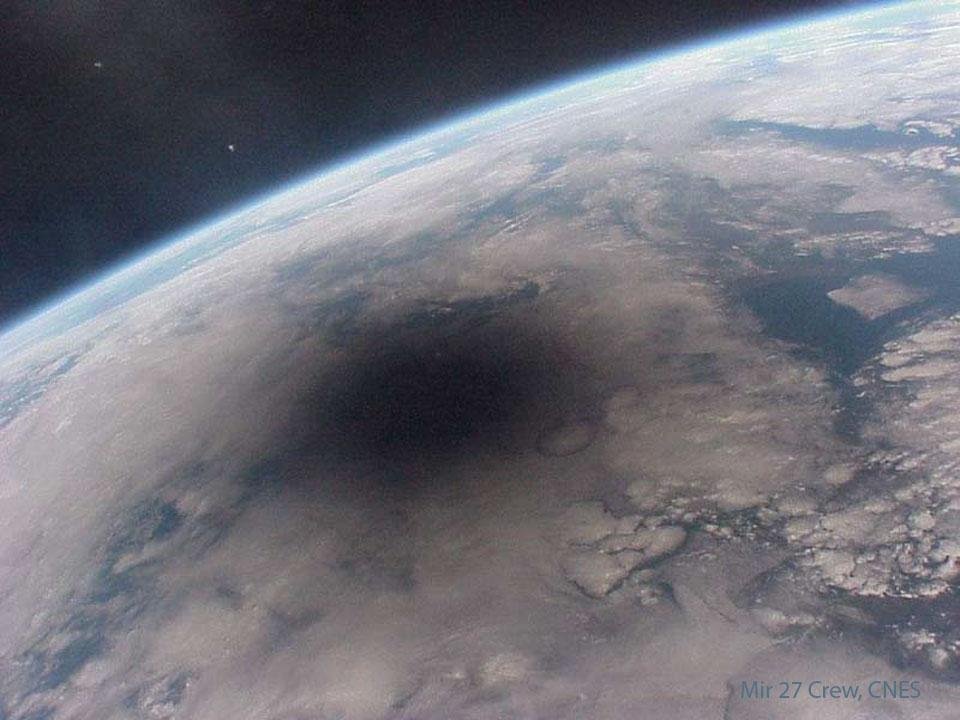Every week, TecMundo and #AstroMiniBR curate a special selection of the most interesting astronomical curiosities produced by their collaborators. profile in x I want to share some information about our beautiful and fantastic universe. Check out!
#1: Solar eclipse seen from space!
The solar eclipse that occurred in North America on the 8th was a spectacular event that fascinated astronomy lovers around the world, including those not in the totality band.
During the eclipse, The Moon came between the Earth and the Sun, completely blocking sunlight It offers a sky show unique in Mexico, the United States and Canada. In addition to the surprise of day “turning into night” for a few minutes, this event also allowed scientists and enthusiasts to observe the solar corona, the Sun’s outer atmosphere that is normally obscured by its brightness.
in the video accelerated Shown above is an exclusive observation of the landscape observed by the GOES-16 geostationary satellite, a crucial tool for terrestrial environmental monitoring.
Located in a geostationary orbit around the equator, more than 35,000 kilometers above Earth, GOES-16 remains synchronized with the Earth’s rotation, allowing it to maintain a steady view of the same point on the Earth’s surface. It provides continuous, detailed observations of our planet’s atmosphere and meteorological phenomena.
#2: A planetary neighbor orbiting “tilt-down”
In the world of astronomy, Uranus, the seventh planet of our solar system, is known for its distinctive tilted axis.. While the planets in the solar system orbit the Sun with their tilt axes relatively close to the orbital plane, Uranus stands out for its extremely tilted tilt axis, which causes it to rotate on its side.
Unlike the planet Earth, which has an axis of inclination of close to 23.5 degrees relative to the orbital plane (a fact responsible for the existence of seasons on our planet), the axis of Uranus is practically parallel to the orbital plane, and its inclination is approximately 98 degrees.
This unusual angle of tilt results in long periods of direct sunlight in certain parts of the planet, leading to wildly different and unpredictable weather conditions and seasons. Challenging our traditional understandings of planetary climate systems.
#3: National spacecraft
The SB-30 suborbital vehicle is a key piece resulting from Brazilian space exploration. As a versatile platform for scientific experiments in microgravity.
Developed by the Aeronautics and Astronautics Institute (IAE) in partnership with the Brazilian Space Agency (AEB), the SB-30 has remarkable technical characteristics: with a height of approximately 8 meters and a payload capacity of up to 400 kg, this vehicle can reach altitudes of up to 300 kilometers. During flight, the SB-30 provides a microgravity window of approximately 6 minutes, allowing experiments in areas such as biology, physics, materials science and technology.
Development and operation of this vehicle on national territory Increasing Brazil’s expertise in space technologies by strengthening our country’s role as a relevant actor on the international space scene. Through SB-30, Brazilian scientists have the opportunity to conduct experiments that contribute not only to the advancement of scientific knowledge, but also to the development of practical applications that will benefit society as a whole.
Did you like the content? Therefore, always stay up to date with astronomical curiosities on TecMundo and take the opportunity to share the article with your friends. See you soon!
Source: Tec Mundo
I’m Blaine Morgan, an experienced journalist and writer with over 8 years of experience in the tech industry. My expertise lies in writing about technology news and trends, covering everything from cutting-edge gadgets to emerging software developments. I’ve written for several leading publications including Gadget Onus where I am an author.













